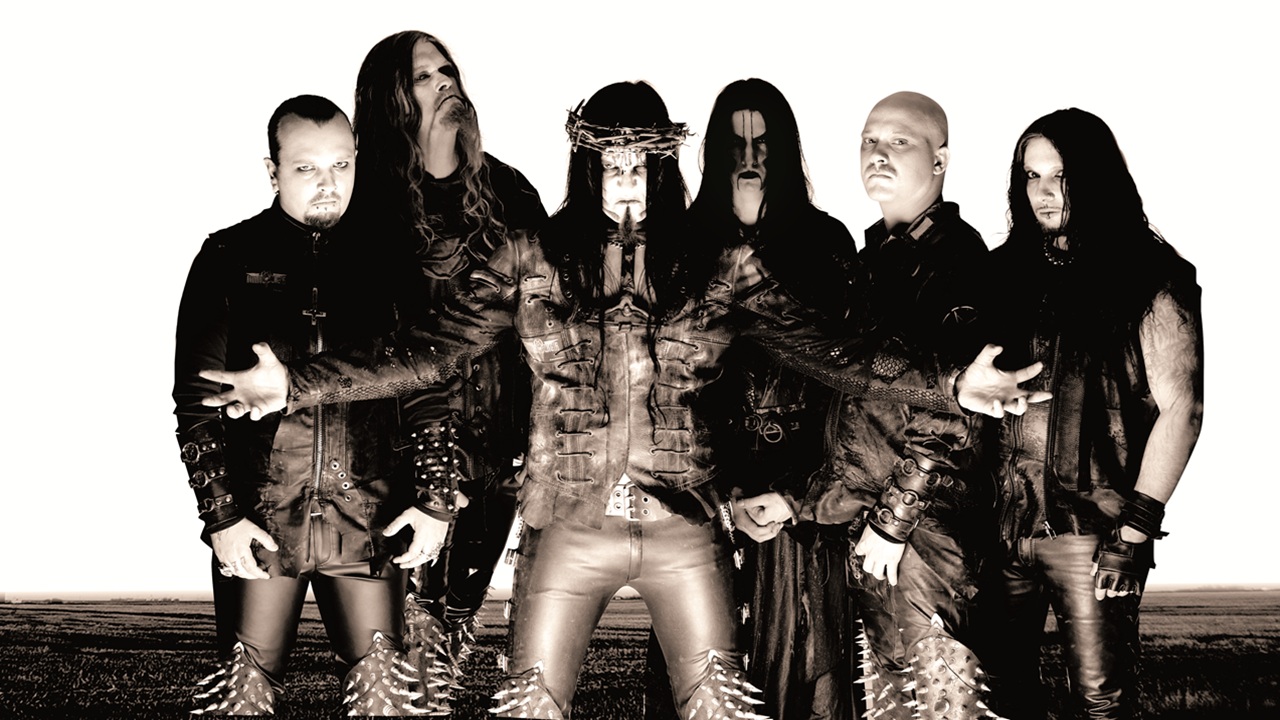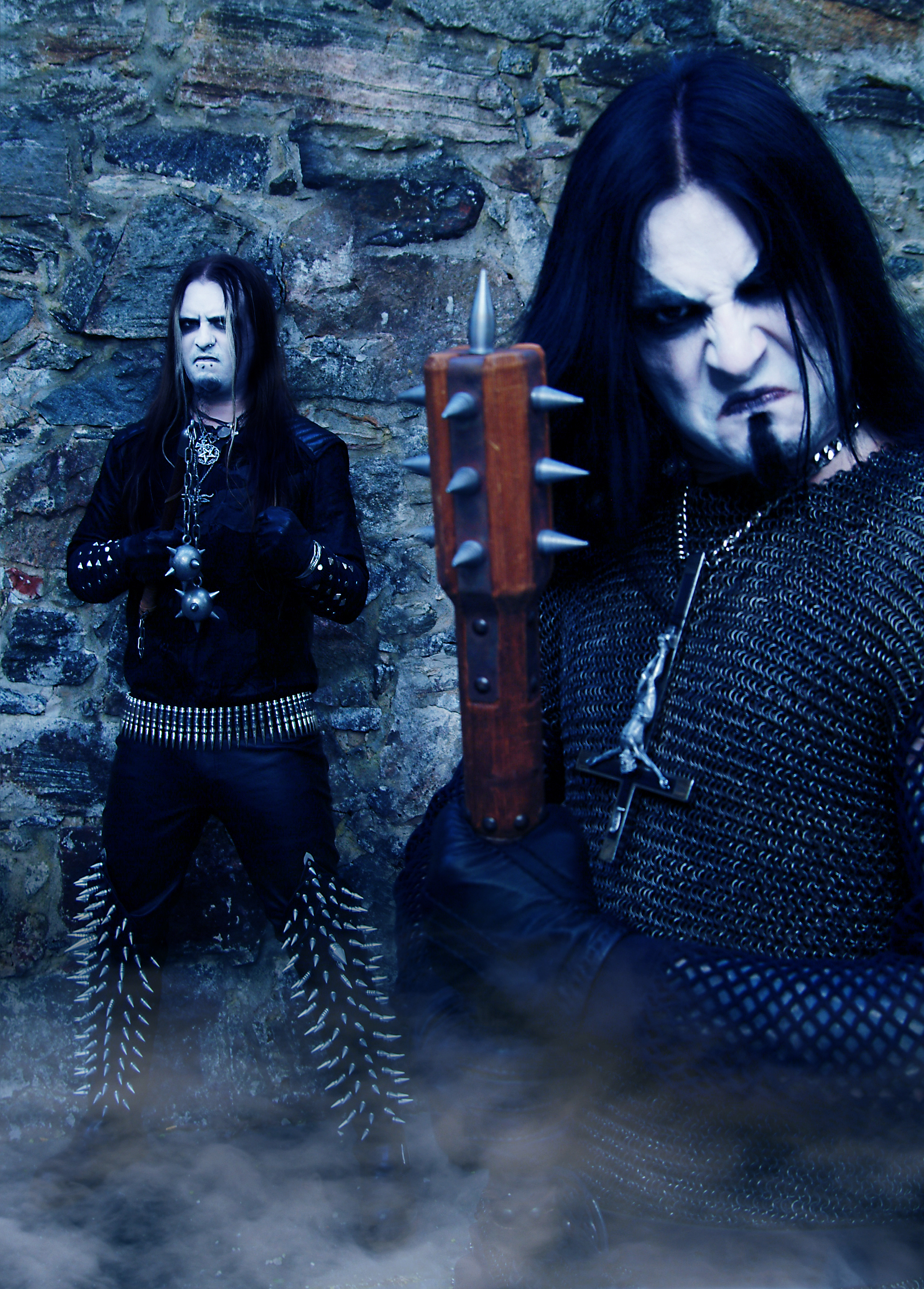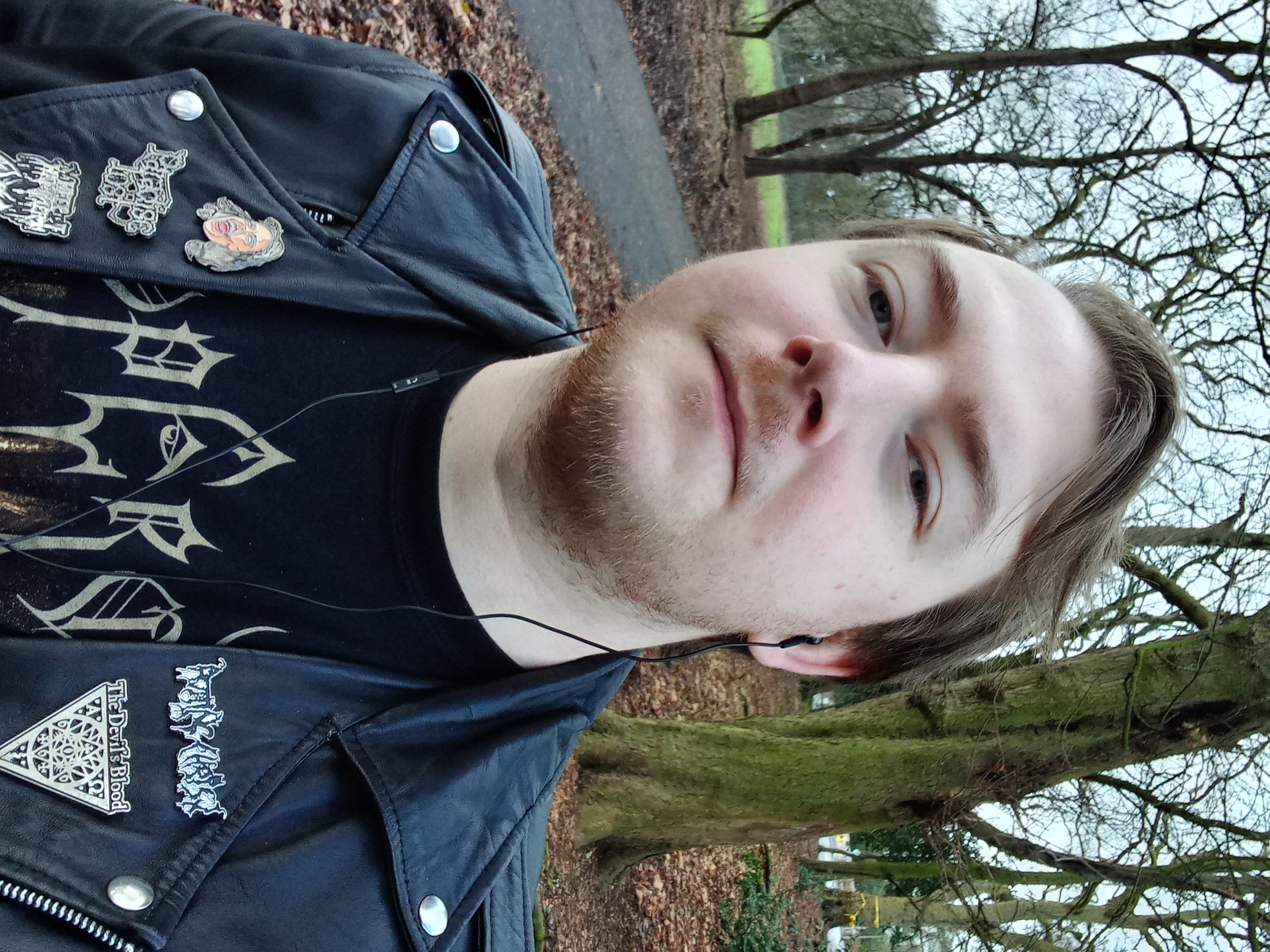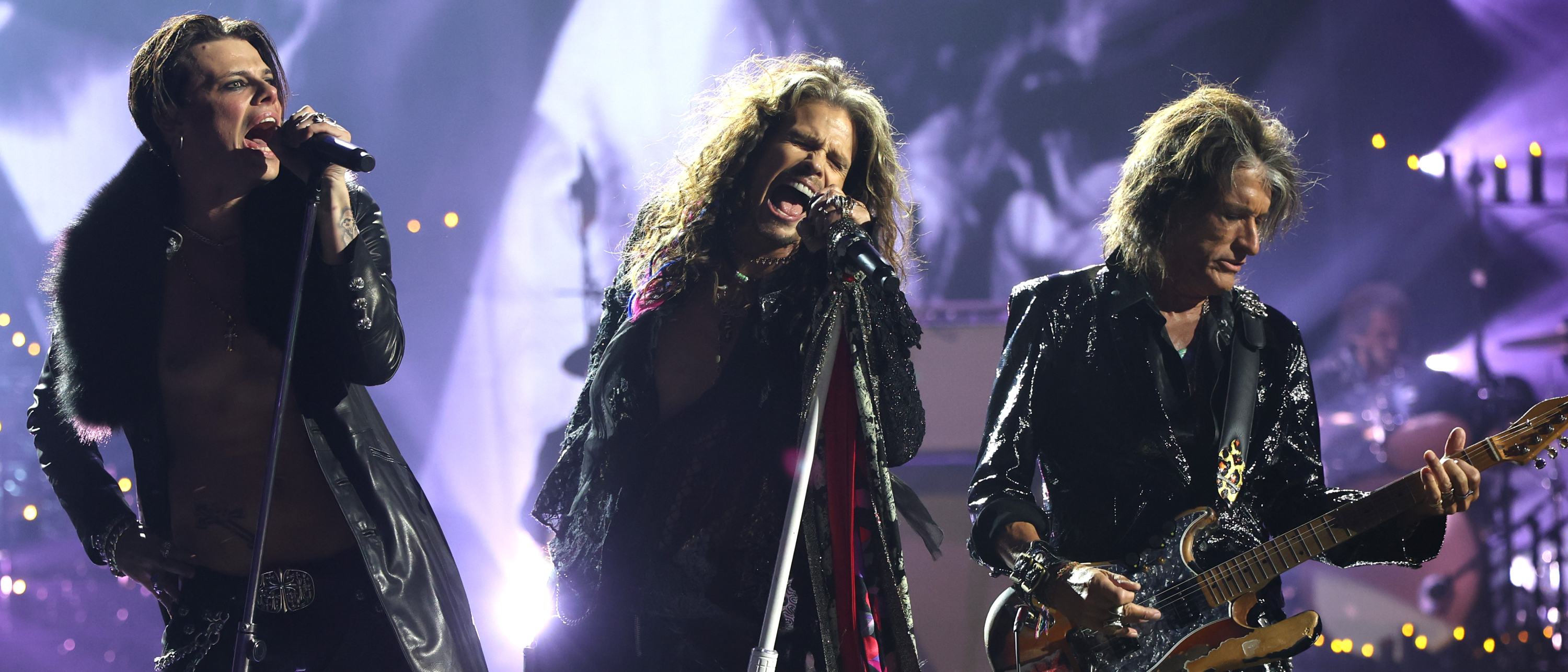"The apocalypse does not have to be the world going down in flames." How Dimmu Borgir reinvented black metal and broke Hollywood with Progenies Of The Great Apocalypse
Working with a full orchestra, Dimmu Borgir's 2003 anthem rewrote the rules for what black metal could sound like

In 2004, Dimmu Borgir guitarist Silenoz sat in a Texas cinema. As the lights dimmed and the movie previews started to show, one of them hit a little different. Accompanying the trailer for director Guillermo del Toro’s new Hellboy film came the unmistakable orchestral blasts of Progenies Of The Great Apocalypse, from Dimmu’s extravagant new album, Death Cult Armageddon, released in September the previous year.
Just a decade before, the members of Dimmu Borgir were teenagers being indoctrinated into the radical new sounds of Norwegian black metal through obscure records purchased at the Helvete record store in Oslo, run by Mayhem mastermind Euronymous. Now, through them, black metal had broken Hollywood.
“It was a culture shift,” Silenoz reflects today. “Sat there, surrounded by people who have no clue who you are, hearing your music in a cinema… I was chuckling to myself. We weren’t thinking that Hellboy was going to be a huge Hollywood production on the scale of Lord Of The Rings or anything, but it obviously got noticed.”
Dimmu certainly had few problems with that. Although the black metal scene always had a flair for the dramatic – particularly the headline-grabbing Norwegian scene – Dimmu had moved themselves beyond their peers with grandiose orchestration and top-of-the-line production values that were far removed from the music’s rough-and-ready roots. It’s little wonder Hollywood wanted a taste.
“Our mindset was that we’d want to be the first to do something rather than follow others,” he reasons. “Part of that is doing stuff without a parachute. When you step into uncertain waters, there is a chance you can hit or miss, but for the most part we had more hits than misses.”
Such is the attitude a band must have if they are to brave the potential fallout of an underground movement being dragged kicking and screaming into such visible mainstream terrain. Alongside the likes of Cradle Of Filth, who would pick up a Grammy nomination for the similarly glossy Nymphetamine the following year but had long been an object of ire for black metal purists, Dimmu found themselves as public representatives for a scene that frequently resented commercial publicity.
The band had been pushing boundaries since the late 90s, when they’d embraced the immensely characterful – but budgetarily achievable – sounds of cheap synths and keyboards to create a symphonic sound, inspired in part by Emperor’s landmark album, In The Nightside Eclipse.
Sign up below to get the latest from Metal Hammer, plus exclusive special offers, direct to your inbox!
Becoming kings of that style on the likes of 1997’s Enthrone Darkness Triumphant, by the turn of the millennium Dimmu were ready to go bigger than anyone before and enlisted the Prague Philharmonic Orchestra to realise their bombastic dreams.
“On [2001 album] Puritanical Euphoric Misanthropia we had started to use a smaller chamber orchestra,” Silenoz recalls. “[Norwegian jazz and classical musician] Gaute Storaas has been helping us through the years arranging the keyboard and orchestral parts, and he suggested that if we wanted to go more full-on for Death Cult Armageddon we use the Prague Philharmonic.”
Recorded at Fredrik Nordström’s Studio Fredman in Gothenburg, Sweden, the sonic fidelity of the huge orchestra was a seismic leap – so much so, they sounded decades ahead of their flimsier symphonic black metal peers. But Dimmu weren’t alone in their symphonic intent.
The early 2000s saw a tremendous boom in the scale and popularity of symphonic metal from the likes of Nightwish and Within Temptation, with Dimmu the first band to match that blockbuster ambition from within the extreme metal scene. Progenies Of The Great Apocalypse put this new-found classical girth right at the forefront, with what Silenoz describes as “a mish-mash of Wagner, Prokofiev, and Beethoven”.
To bring it back to Hellboy terms, it’s genuinely cinematic. The opening line of Progenies… (‘The battle raged on and on’) is also among the most instantly recognisable in black metal legend, though it’s not Dimmu Borgir frontman Shagrath who utters it. Instead, the band called in crab-walker extraordinaire Abbath, then of fellow Norwegian icons Immortal, to do the honours.
There might have been some difference of opinion around Dimmu’s courting of Hollywood and just how expensive they had made black metal sound, but the presence of Abbath gave them a subversive edge – they were bringing one of their original black metal comrades along with them into this unchartered territory.
“It wasn’t difficult to get him,” Silenoz shrugs. “It was just cool to have one of those legends involved in your art. He does another vocal cameo on Heavenly Perverse on the album, and we’ve been talking about how if we ever do any shows together at some point, he can come on and do his part It’s just a shame that he wasn’t able to be a part of the video for some reason.”
Early black metal videos were delightfully kitsch - if Abbath had appeared in the Progenies video, it’s unlikely the wizard’s hat that featured in Immortal’s infamous Call Of The Wintermoon clip from 1992 would have come with him. But in 1996, Satyricon released their pioneering Mother North video, and other black metal bands started to get the budget to produce them. Progenies represented the apex, as Dimmu projected an image fit for and commanding of the massive rock video market of the early 2000s.
Directed by Patric Ullaeus between shoots for Within Temptation and Lacuna Coil, it saw the band perform inside an enormous steam-powered turbine, showcasing the futuristic and industrial imagery that Dimmu Borgir adopted around Death Cult Armageddon, shaking off their previous medieval and archaic aesthetic fixations. For Silenoz, this imagery was part of the album’s rebellion against the shackles of the old world.
“A lot of the lyrics on Death Cult Armageddon share the same themes of disobedience to this earthly realm, organised modern religion, cults, sects,” he elaborates. “All of these things take away from humanity’s identity and prosperity. They steal the energy and the livelihoods, so to speak, from each person, and we want to come to terms with that in order to move on. You have to break away from those boundaries.”
Viewed in this light, Progenies Of The Great Apocalypse is an unexpectedly optimistic song, that raging battle announced by Abbath not necessarily an end of days but a rebirth.
“The ‘apocalypse’ does not have to be the world going down in flames, it can be something of an unveiling,” Silenoz considers. “The lyrical theme on that song, and I guess overall on that album, is dealing with trying to find yourself in darkness, coming to terms with it, and then starting anew. When I wrote the lyrics, I tried to look back to our mental space in the early 90s, when we were still teenagers but felt invincible. It touches upon certain magic and old rites, but overall it’s more like a statement.”

The gargantuan hook delivered by then-bassist ICS Vortex - ‘We, who not deny the animal of our nature; we, who yearn to preserve our liberation’ – reads like a manifesto on the very identity of black metal, casting aside society’s follies. Vortex, who reunited onstage with the band for the first time last year at Oslo’s Inferno Festival, following their acrimonious split in 2009, is an almost cartoonishly colossal presence on the track, emphasised by the band’s restraint, as they only deploy his vocals on a few key spots on the album.
“I think it’s very safe to say that to utilise his vocal talents was a case of less is more,” Silenoz says. “When we did something with them, it would be something that would stick out and be memorable. That’s how we wrote songs back in the day when he was in the band. He had his other bands at the same time, so we didn’t want to overdo it and water it down.”
Ramming forth like a fist of black metal ideology through the curtain of the mainstream, Progenies Of The Great Apocalypse became one of the great standard-bearing anthems – in the true sense of the word – for extreme music.
Within three years of its release, Death Cult Armageddon became the first album on Nuclear Blast Records to sell more than 100,000 copies in the USA – a massive number for a band who’d gotten their start in the shadow of Norwegian black metal’s controversial founding fathers.
In the present day, with Lorna Shore’s pomp and brutality being one of our most unlikely success stories, it’s easy to look back at Progenies… as a paradigm shift for the symphonically extreme.
“To get that far on our own terms was something we took pride in,” Silenoz nods. “We had nothing to compare with because we were the first ones basically doing it. That’s the mindset we have to this day and that’s probably why we’re still around."

Beginning contributing to Metal Hammer in 2023, Perran has been a regular writer for Knotfest since 2020 interviewing icons like King Diamond, Winston McCall, and K.K. Downing, but specialising in the dark, doomed, and dingy. After joining the show in 2018, he took over the running of the That’s Not Metal podcast in 2020 bringing open, anti-gatekeeping coverage of the best heavy bands to as many who will listen, and as the natural bedfellow of extreme and dark music devotes most remaining brain-space to gothic and splatter horror and the places where those things entwine.
You must confirm your public display name before commenting
Please logout and then login again, you will then be prompted to enter your display name.
